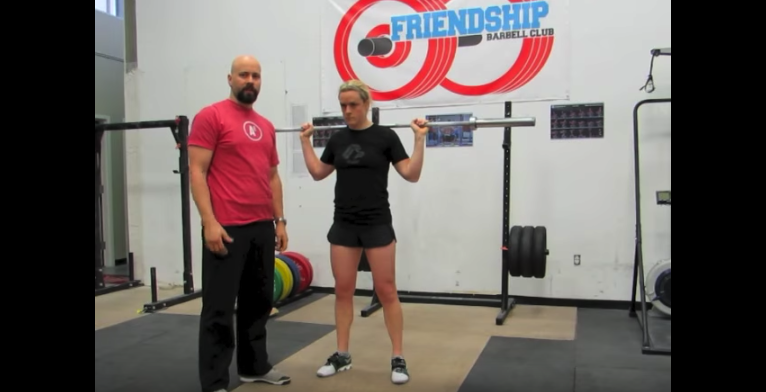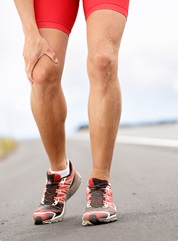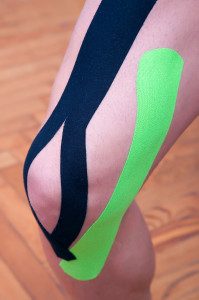Running Injuries: Runner’s Knee

 Runner’s Knee
Runner’s Knee
As the name suggests, Runner’s knee is a common injury among runners. However, “Runner’s knee” isn’t really a specific diagnosis, and it can also affect any athlete who does activities that require a lot of knee bending — like cycling, jumping, or squatting. Depending on the athlete, it may also be called patellofemoral pain syndrome (PFPS), “Jumper’s Knee,” or the newly coined “CrossFitter’s knee.” It usually causes aching pain around or under the kneecap.
Runner’s Knee Symptoms
Runner’s knee is typically associated with pain behind or around the patella or kneecap, especially where the thighbone and the kneecap meet (patellofemoral joint). Pain is usually worse or increases when you bend the knee, such as going up or down stairs, squatting, kneeling, running, or even rising from a chair. Occasionally there will be swelling around the knee cap, and you may experience some popping or grinding sensations in the knee.
Since Runner’s knee is a loose term for several specific diagnoses with different causes, individuals may respond very differently to treatment. Runner’s knee can result from the following:
- Overuse. Repeated bending during running or cycling or high stress exercises such as lunges, plyometrics, or some Olympic lifts can irritate the kneecap joint (patellofemoral joint). Overstressed tendons around the patella or kneecap may also cause the pain of runner’s knee.
- Direct trauma to the knee, like a fall or blow.
- Weak thigh muscles or muscle imbalance. If you have an imbalance between the muscles that make up the quadriceps group (the muscle along the front of your thigh), physical stress won’t be evenly distributed through the knee. This often causes the knee cap to be pulled away from the midline of the knee joint which will typically cause pain either behind the knee cap or along the top of the knee cap.
- Problems with the feet or hips. We often refer to the knee as the middle child, in that it get’s “blamed” for what the hip and feet do. If you’re a middle child, you probably know exactly what we’re talking about. So while the underlying issue may be weak hips/glute muscles or over-pronation of the foot, you experience pain in the knee.
Prevention & Self Treatment
 The standard self-treatment protocol is R.I.C.E (rest, ice, compression, and elevation), as well as taking anti-inflammatory medications such as NSAIDs, usually ibuprofen, or acetaminophen, usually Tylenol. Due to the wide range of causes, results with this approach will vary, and we find that most athletes do NOT want to take 4 or more weeks away from their sport of choice.
The standard self-treatment protocol is R.I.C.E (rest, ice, compression, and elevation), as well as taking anti-inflammatory medications such as NSAIDs, usually ibuprofen, or acetaminophen, usually Tylenol. Due to the wide range of causes, results with this approach will vary, and we find that most athletes do NOT want to take 4 or more weeks away from their sport of choice.
Stretching and foam rolling the muscles of the quadriceps will help ensure that the knee cap isn’t being overstressed in one direction during repetitive exercises like running, cycling or some CrossFit WODs. Proper footwear and glute strengthening exercises will decrease the risk of the knee suffering from “middle child syndrome.” Proper rest and recovery after workouts also plays an important role in avoiding any sports-related injury. Kinesiotaping can also be beneficial, just make sure you follow an appropriate set of instructions. Here’s a good starting point: https://www.youtube.com/watch?v=v2xYUxXrjxk
Runner’s Knee Treatment
Be smart! If you aren’t getting better, get some help. I can’t tell you how many patients come to us after waiting months or even years before seeking treatment. The longer you wait, the harder it is to get rid of your symptoms! Here are some tips for finding the right health care professional.
- Find someone certified in soft tissue mobilization, whether it’s instrument assisted like Graston Technique or hands on like Active Release Technique (ART). Overuse injuries respond well to manual therapy or hands-on muscle release work. If this is something that’s been around for a while, exercise alone won’t typically work because the muscles have learned to compensate and the neurological pain pathway has been well established.
- Not every chiropractor or physical therapist is created equally. Some do very little soft tissue work and rely mostly on manipulations or exercise, others take a more integrated approached of using multiple treatment methods. We all specialize in our own areas. This can seem frustrating, but most of us have websites to tell you what we are certified in. There’s nothing worse than wasting 8 insurance visits not getting better, only to switch places and have them fix it in two or three visits.
Our Approach
On your first visit, we’re going to watch the way you move. That typically means gait analysis on the treadmill and/or performing multiple squat reps, as well as performing several functional movement screens. We need to evaluate the way you move and identify any compensations you may be showing to know why your knee is causing you pain. Once the underlying cause has been established we can start a targeted treatment plan involving soft tissue treatments and any necessary joint manipulations and exercises. This WILL require homework from you! We have a team approach. We’re not here just to fix you, we want to educate you on why this injury occurred and give you the information you need to keep it from happening again!
 262-373-9168
262-373-9168



